Model Evaluation / Prediction
- Evaluate the models on a unseen test-set
- Evaluate strength and weaknesses of the best models
2.5.2 Resampling Methods
 Learning objectives
Learning objectives
You will be able to
- what questions to evaluate based on training, validation and test-sets
- perform LOO and k-fold cross-validation to create models that do not over-fit the training data
 Model & Feature Selection
Model & Feature Selection
- we want to find the best model for the data
- models can differ in
- predictors / features that go into the model
- model type (linear regression, decision tree, etc...)
- models power to over-fit
- hyper parameters (parameters, that tweak the model)
- first, we focus in the the predictors / features
Finding the best predictors / features
- We have possible predictor variables in the data set to predict
body_mass_g:species, island, bill_length_mm, bill_depth_mm, flipper_length_mm, sex
- Encoding the categorical variables binary we have possible predictors
- isAdelie, isGentoo , fromTorgersen, fromBiscoe, bill_length_mm, bill_depth_mm, flipper_length_mm, isFemale
- from that we can build possible linear models:
- ...
What we found
- It is hard to predict what is the best model in advance
- We compared models in different ways
- Fit on the training set (, )
- Prediction accuracy
- on the training
- and test-set ()
- Evaluation only on the training set can lead to over fitting
Over-fitting the Training Data
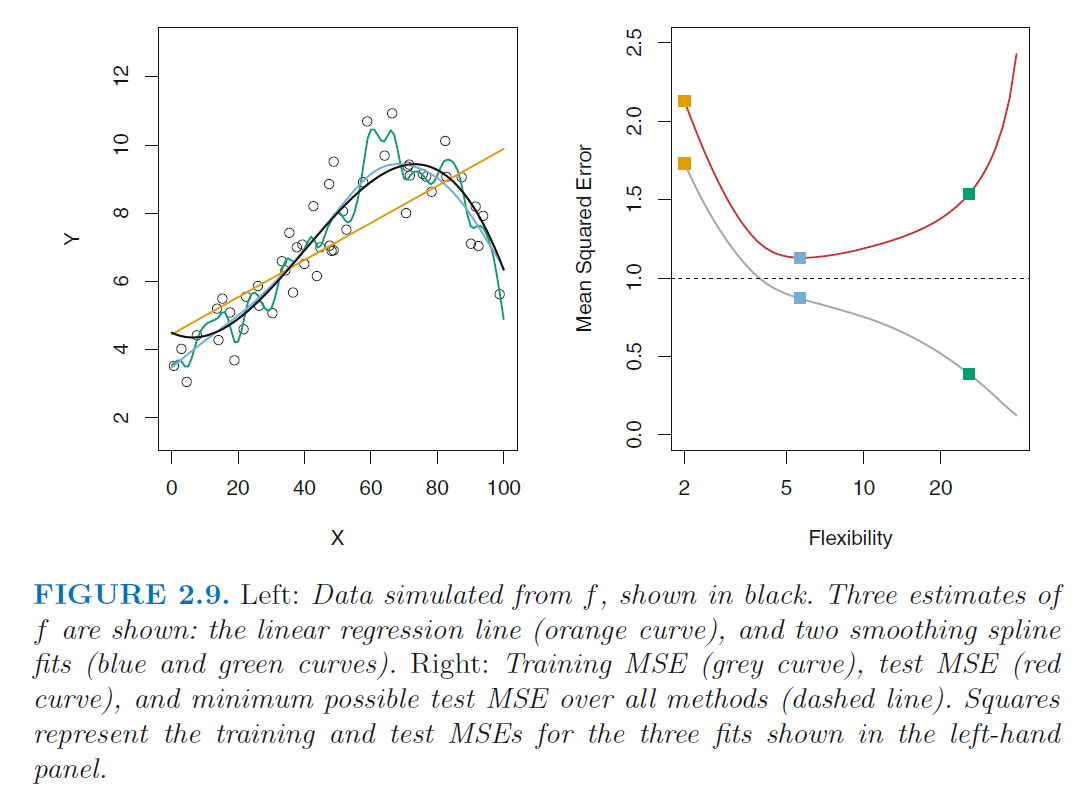
- What we really want to know: What will be the best model on new unseen data?
- We need to select models on a set that is not the training data
- After selecting a model, we still want to test how well it performs on unseen data
- validation-set
- A set on which we compare trained models to find
- the best features and ML Algorithms for the task
 We must divide the data into three parts
We must divide the data into three parts
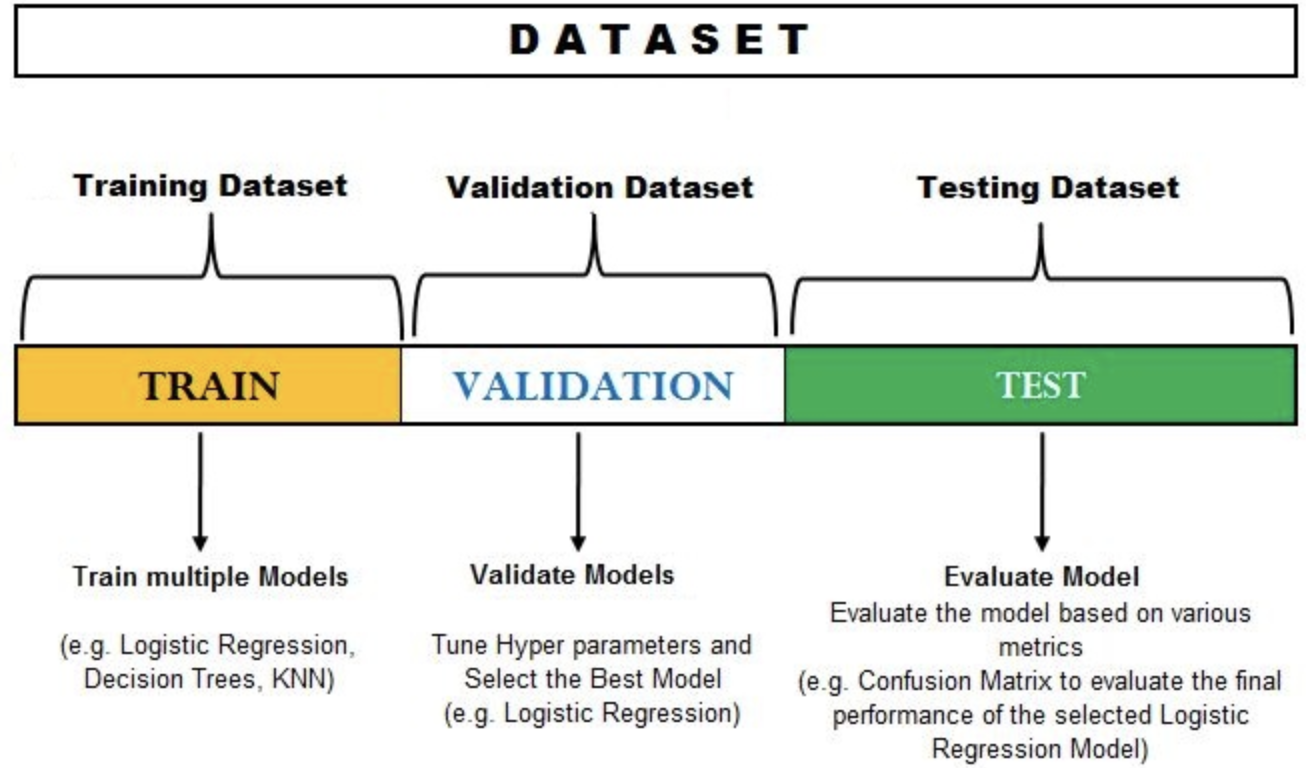
https://www.sxcco.com/?category_id=4128701
| Training-Set | Validation-Set: | Test-Set |
|---|---|---|
| for fitting the models | or selecting the models (e.g., which parameters to include) | hold-out set of data, to prove that we selected a good model for any data |
How do we split the data?
- Often, we do not have much data, but ...
- if we choose a
- small training set
- We only use a small proportion of the data to learn
- If we have powerful models on sparse data, they tend to over-fit
- small validation / test-set
- set can be very special by chance
- misleading results
https://www.sxcco.com/?category_id=4128701
 The Validation-Set Approach
The Validation-Set Approach
- split the data once
- / / are common proportions
data = [3, 7, 13, 15, 22, 25, 50, 91] training = [3, 7, 13, 50] validation = [15, 91] test = [22, 25]
- note, that we can shuffle the folds randomly - train is not the first three!
Problems with the Validation-Set Approach
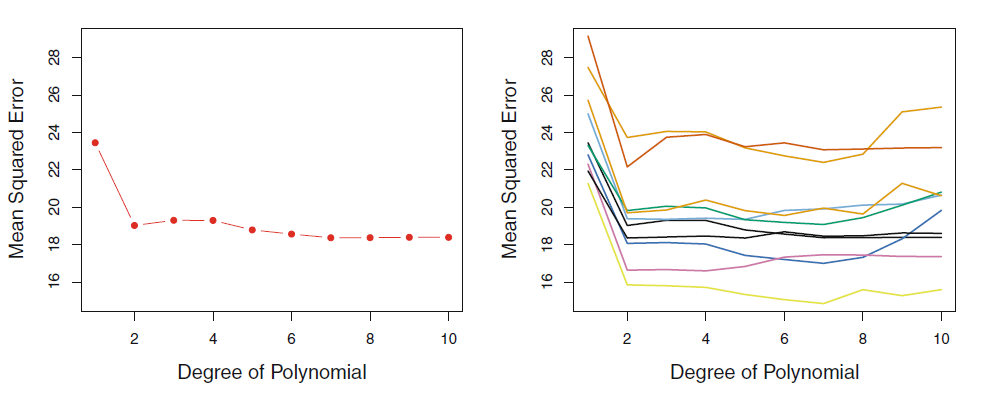
- test-set vs polynomial complexity of the model
- Left: test-set one split, Right: test-set with ten different splits
- Results depend on how we split the data
 Leave-One-Out Cross-Validation (LOO)
Leave-One-Out Cross-Validation (LOO)
- only put one observation in the test or validation-set
- repeat this for all observations
data = [3, 7, 13, 15, 22, 25, 50, 91]
test = [22, 25]
training_1 = [7, 13, 15, 50, 91]
validation_1 = [3]
training_2 = [3, 13, 15, 50, 91]
validation_2 = [7]
...
 Averaging the Cross-Validation results
Averaging the Cross-Validation results
data = [3, 7, 13, 15, 22, 25, 50, 91]
- With observations in the original data set
- We get models with different prediction errors on the validation-sets
- We can still calculate the the same way
 k-fold Cross-Validation
k-fold Cross-Validation
- instead of folds with length , the data is split in folds of equal length
data = [3, 7, 13, 15, 22, 25, 50, 91]
test = [22, 25]
training_fold_1 = [13, 15, 50, 91]
validation_fold_1 = [3, 7]
training_fold_2 = [3, 7, 50, 91]
validation_fold_2 = [13, 15]
...
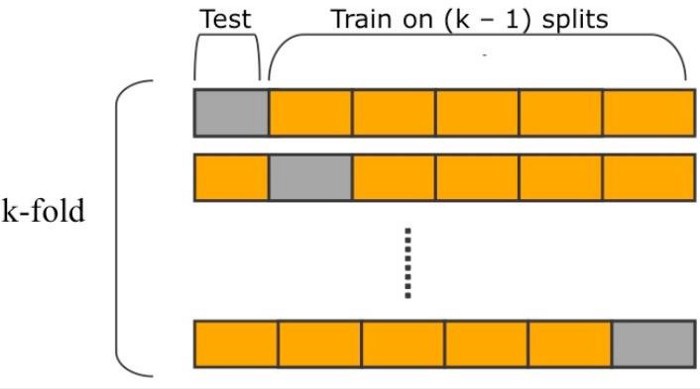
https://medium.com/coders-mojo/quick-recap-most-important-projects-data-science-machine-learning-programming-tricks-and-c7d99a7a2391
Averaging the Cross-Validation results
- With folds
- we get different s
What to use?
- Leave-One-Out (LOO) is a special case of n-folds ()
- LOO is computationally more expensive
- LOO has a smaller bias (we use more data)
- LOO has a higher variance (the models we train are all
very similar, while the test-set very different) using kFolds with or has been shown empirically
to yield good results
 A practical approach to Cross-Validation
A practical approach to Cross-Validation
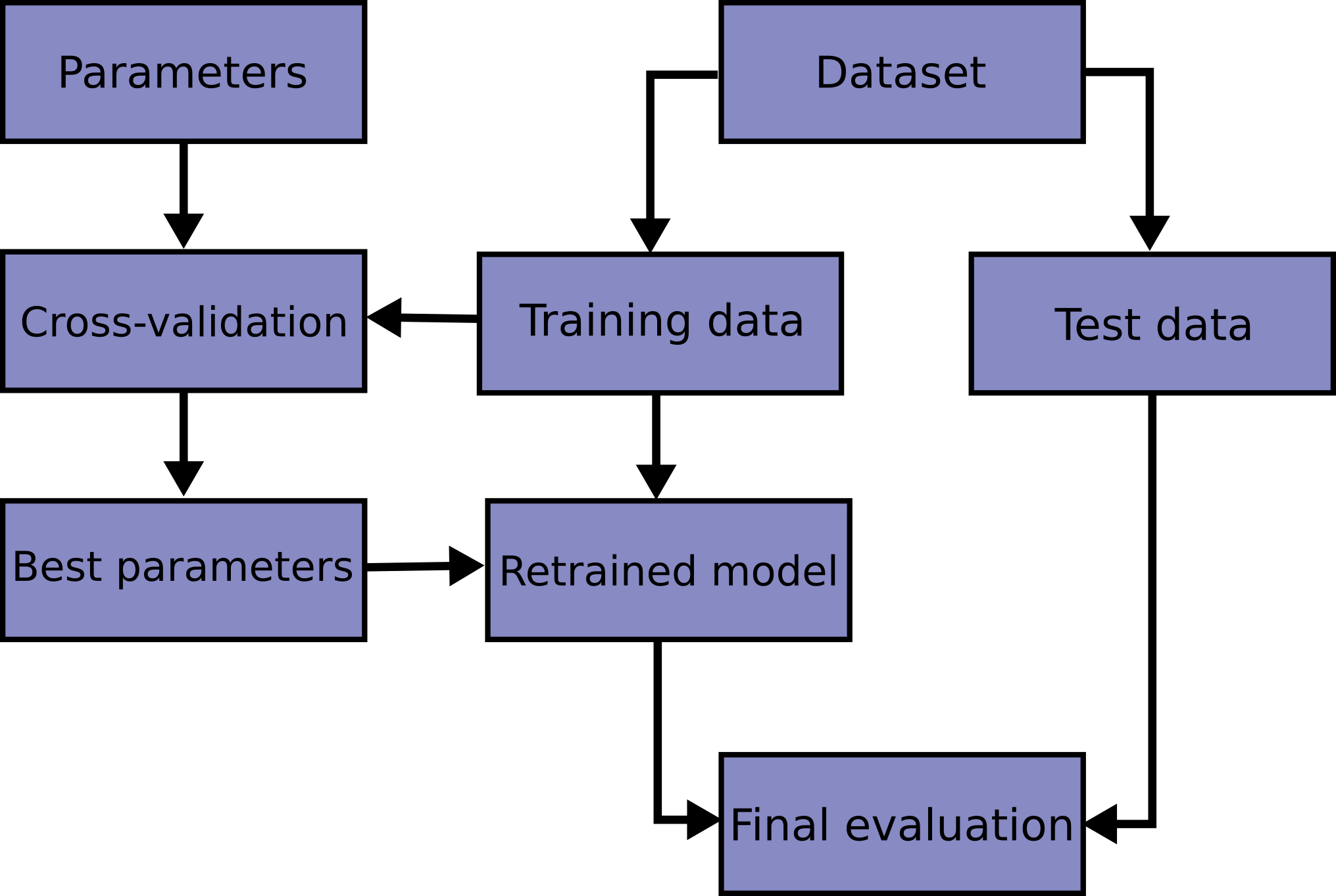
https://scikit-learn.org/stable/modules/cross_validation.html
| Training-Set | Validation-Set | Test-Set |
|---|---|---|
| used to train the models | used to select the model, predictors and/or parameters | used to prove the models performance |
| 5-fold CV (with Validation) | 5-fold CV (with Training) | cut out at the beginning |
- note that the data should be shuffled before the split
- there are some cases, where this will not work (e.g. temporal data)
2.5.3 Feature Selection
- given we have possible linear models:
- ...
- how can we reliably find the best one?
- we use 5-fold cross-validation to find the best features (predictors) and parameters
Option 1: Best Subset Selection
- brute force: train all possible models on the training set
- compare the models performance on the validation-set
- select the best model (e.g, based on validation )
- With 5-fold cross-validation You will train different models
 Option 2: Forward Selection
Option 2: Forward Selection
- start he the null model ()
- calculate the best model with only one predictor
- calculate the best model containing and one further predictor
- ...

https://medium.com/codex/what-are-three-approaches-for-variable-selection-and-when-to-use-which-54de12f32464
 Option 3: Backward Selection
Option 3: Backward Selection
- inversion of the forward selection
- start with all predictors
- drop the predictor with the smallest decrease in model accuracy
 More Options:
More Options:
- Automated Feature Selection
- Regularization can shrink unimportant parameters
 Case Study
Case Study
Try to find the best possible linear model for predicting the penguin weight using
- best subset selection and
- cross-validation
https://www.scoopnest.com/user/AFP/1035147372572102656-do-you-know-your-gentoo-from-your-adelie-penguins-infographic-on-10-of-the-world39s-species-after
5.1 Cross-Validation and Model Selection - Resampling
40 minutes
 Learning Summary
Learning Summary
Now, You can
- what questions to evaluate based on training, validation and test-sets
- perform LOO and k-fold cross-validation to create models that do not over-fit the training data